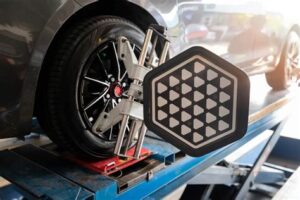Explore car alignment issues, their causes, consequences, signs of misalignment, correction methods, and the importance of regular wheel alignment for vehicle safety.**Car Alignment Issues: Understanding the Basics**
Car alignment issues can significantly impact your vehicle’s performance, safety, and overall driving experience. Proper wheel alignment ensures that your car handles predictably and efficiently, allowing for smoother rides and better fuel economy. However, various factors can lead to misalignment, from everyday wear and tear to road hazards like potholes. Ignoring alignment problems can result in serious consequences, including uneven tire wear and compromised handling. In this blog post, we will explore the common causes of car alignment issues, the signs that indicate your wheels may be misaligned, and the essential methods for correcting these problems. Additionally, we’ll emphasize the importance of regular wheel alignment to ensure your vehicle remains in optimal condition. Let’s delve deeper into this crucial aspect of vehicle maintenance!
Causes of Car Alignment Issues
Car alignment issues can arise for various reasons, often leading to significant driving problems and increased tire wear. Understanding the causes of these alignment issues is crucial for every vehicle owner. Here are some common factors that can contribute:
- Impacts from potholes and road debris: Hitting a pothole, curb, or other obstacles can drastically affect wheel alignment.
- Worn suspension components: Parts such as bushings, ball joints, and shocks can wear out over time, leading to misalignment.
- Accidents: Collisions, even minor ones, can cause structural changes to the vehicle that affect wheel alignment.
- Improper installation of tires: Incorrectly aligned tires can result from poor tire installation or rotation practices.
- Natural wear and tear: Normal driving conditions can lead to gradual shifts in alignment due to the wear of various vehicular components.
Regular maintenance can help mitigate many of these issues, ensuring that your vehicle remains in optimal condition. It’s advisable to have your car inspected frequently for any signs of misalignment.
Being aware of the causes of car alignment issues enables drivers to take proactive measures. By addressing these factors early, you can avoid extensive repairs and maintain your vehicle’s performance.
In summary, understanding the causes of car alignment issues not only contributes to safer driving but also enhances the longevity of your vehicle’s tires and overall mechanical integrity.
Consequences of Misaligned Wheels
Understanding the consequences of misaligned wheels is essential for any car owner. When your vehicle’s wheels are not aligned correctly, it can lead to a variety of issues that can affect both the performance and safety of your car. Below are some significant consequences of having misaligned wheels:
| Consequence | Description |
|---|---|
| Uneven Tire Wear | Misalignment can cause tires to wear unevenly, leading to premature tire replacement. |
| Decreased Fuel Efficiency | Improper wheel alignment can increase rolling resistance, causing the engine to work harder and consume more fuel. |
| Steering and Handling Issues | When wheels are misaligned, the vehicle may pull to one side, making it difficult to steer and increasing the risk of accidents. |
| Impact on Suspension Components | Constant misalignment can lead to added stress on suspension parts, causing premature wear and potential failures. |
In summary, the consequences of misaligned wheels can be serious. From uneven tire wear to decreased fuel efficiency, these issues can lead to higher costs and safety risks. Regular maintenance checks are crucial for detecting alignment problems early.
Moreover, steering and handling issues caused by misalignment can compromise your safety on the road. It’s important to be aware of these potential consequences to avoid complications that may arise from neglecting wheel alignment.
By understanding the importance of maintaining proper wheel alignment, you can ensure a smoother, safer driving experience while prolonging the life of your vehicle’s tires and suspension system.
Signs of Poor Wheel Alignment
Recognizing the signs of poor wheel alignment is crucial for maintaining your vehicle’s performance and safety. Many drivers may overlook the subtle indicators, leading to more significant issues down the line. Here are some common signs that suggest your wheel alignment may be off:
- Uneven tire wear: If you notice that your tires are wearing more quickly or unevenly on one side, this is often a clear indication of misalignment.
- Vehicle pulls to one side: When driving straight, if your vehicle drifts to the left or right despite your hands being off the wheel, it may be time to get your alignment checked.
- Steering wheel is off-center: If your steering wheel appears skewed when driving straight, this could signal an alignment issue.
- Vibration or shaking: A misaligned vehicle can cause your steering wheel to vibrate or shake, making for an uncomfortable driving experience.
Noticing these warning signs early on can help prevent more severe problems in the future. Addressing alignment issues promptly can save you money on tire replacements and repairs, as well as ensure a smoother ride.
In addition to these signs, it’s essential to have your alignment checked regularly, especially after hitting a large pothole or curb. Taking your vehicle for a professional alignment service is vital in maintaining optimal vehicle performance and safety.
Ultimately, keeping an eye out for these alignment problems can contribute to a safer and more efficient driving experience. Regular maintenance is key to ensuring your wheels remain properly aligned.
Methods for Correcting Alignment Problems
Correcting alignment problems is crucial for ensuring the safety and performance of your vehicle. Below are some effective methods to address misalignment issues:
| Method | Description |
|---|---|
| Wheel Alignment Service | A professional technician adjusts the angles of the wheels following the manufacturer’s specifications. |
| Adjusting Tie Rods | This method involves adjusting tie rods to ensure that the wheels are parallel to each other and perpendicular to the ground. |
| Inspecting Suspension Components | Check and replace any worn out parts in the suspension system that may be causing misalignment. |
Regular maintenance of your vehicle can prevent alignment issues from developing. Keeping an eye out for any changes in handling or tire wear can help identify problems early.
If you notice your car pulling to one side, it may be time for a professional assessment. Ignoring wheel alignment can lead to additional problems down the line.
Overall, maintaining proper wheel alignment is essential for safe driving and prolonged tire life. Implementing these methods for correcting alignment problems will help ensure a smoother, safer ride.
Importance of Regular Wheel Alignment
Regular wheel alignment is crucial for maintaining a vehicle’s performance, safety, and tire longevity. When the wheels are properly aligned, your vehicle can handle better, ensuring a smoother ride and an overall optimized driving experience. Misalignment can lead to various problems, including uneven tire wear, reduced fuel efficiency, and difficulty in steering.
First and foremost, one of the significant reasons to prioritize regular wheel alignment is to extend the life of your tires. Properly aligned wheels help distribute the weight of the vehicle evenly, which minimizes the friction on the tire edges. As a result, you can prevent premature tire wear and save money on replacements.
Another essential aspect to consider is the impact on vehicle safety. A misaligned vehicle can cause it to pull to one side, making it harder to control. This can be especially dangerous in high-speed situations or while making quick maneuvers. Thus, investing in regular alignment checks is not just about vehicle maintenance—it’s about ensuring the safety of everyone on the road.
Frequently Asked Questions
What are some common signs of car alignment issues?
Common signs include uneven tire wear, the steering wheel being off-center when driving straight, the car pulling to one side, and squeaking or grinding noises when turning.
How can misalignment affect my car’s performance?
Misalignment can lead to reduced fuel efficiency, increased tire wear, and difficulty in handling, making your vehicle less safe to drive.
What causes a car to become misaligned?
Common causes of misalignment include hitting potholes, curbs, or other obstacles, worn suspension components, and regular wear and tear over time.
How often should I check my car’s alignment?
It’s recommended to check your car’s alignment at least once a year or whenever you notice signs of misalignment, as well as after significant road impacts.
Can I perform alignment checks at home?
While you can perform basic checks at home using simple tools, it’s best to have a professional alignment done using specialized equipment for accuracy.
What is the difference between wheel alignment and wheel balancing?
Wheel alignment involves adjusting the angles of the wheels to ensure they are perpendicular to the ground and parallel to each other, while wheel balancing ensures that the weight of the wheel and tire is distributed evenly.
What can I expect during a professional alignment service?
During a professional alignment service, a technician will inspect your suspension components, adjust the angles of your wheels, and provide a report on the condition and wear of your tires.





